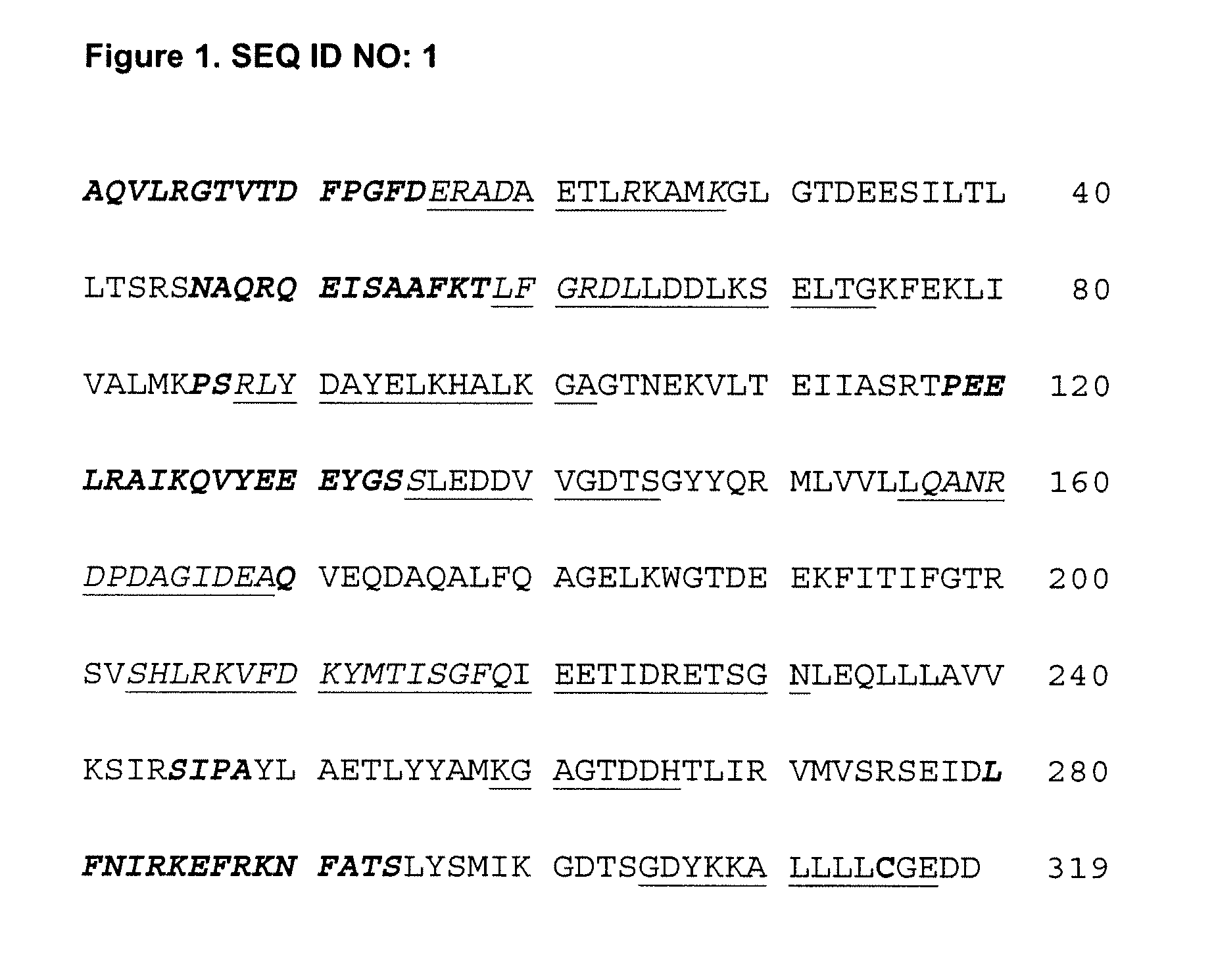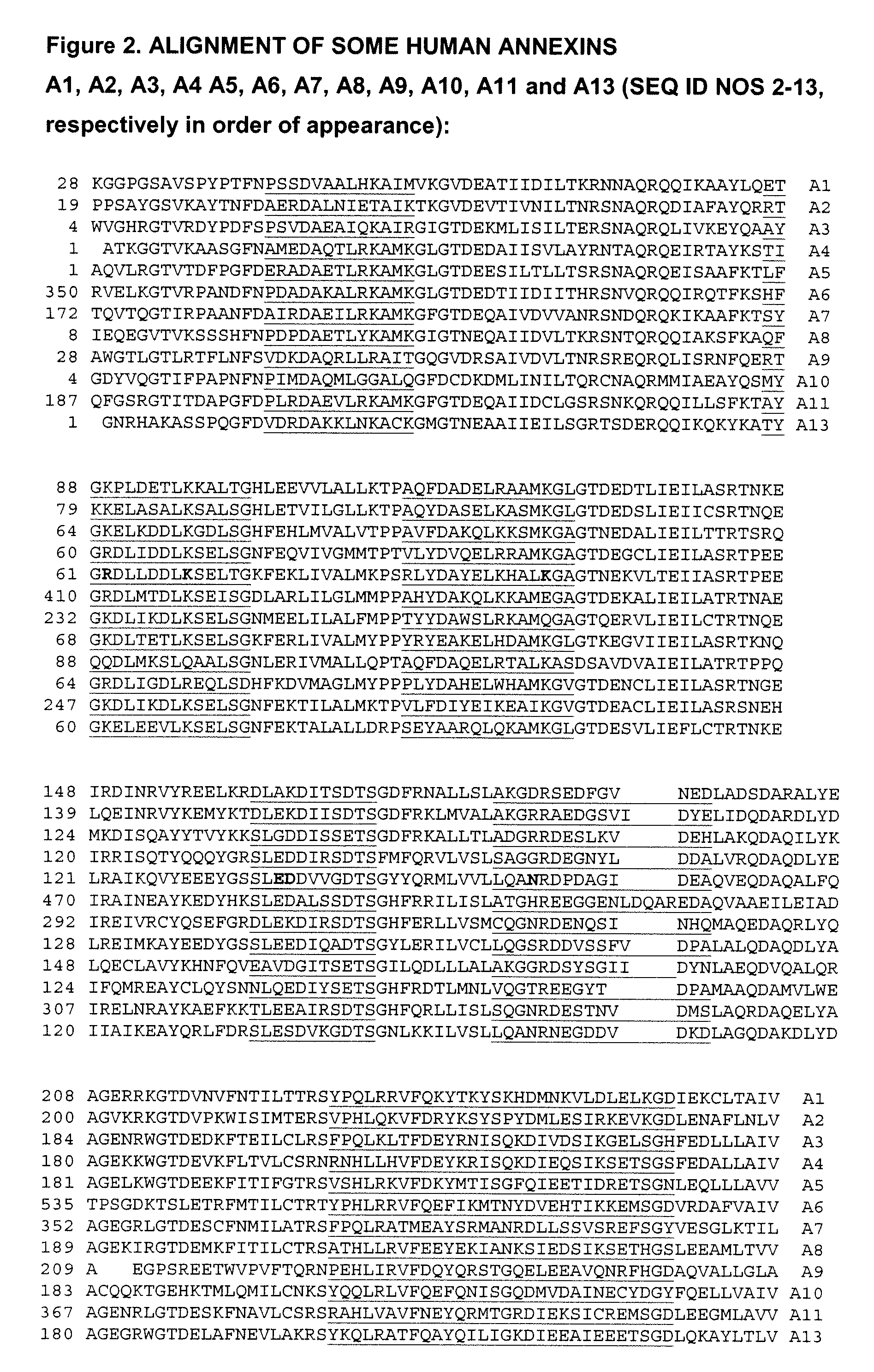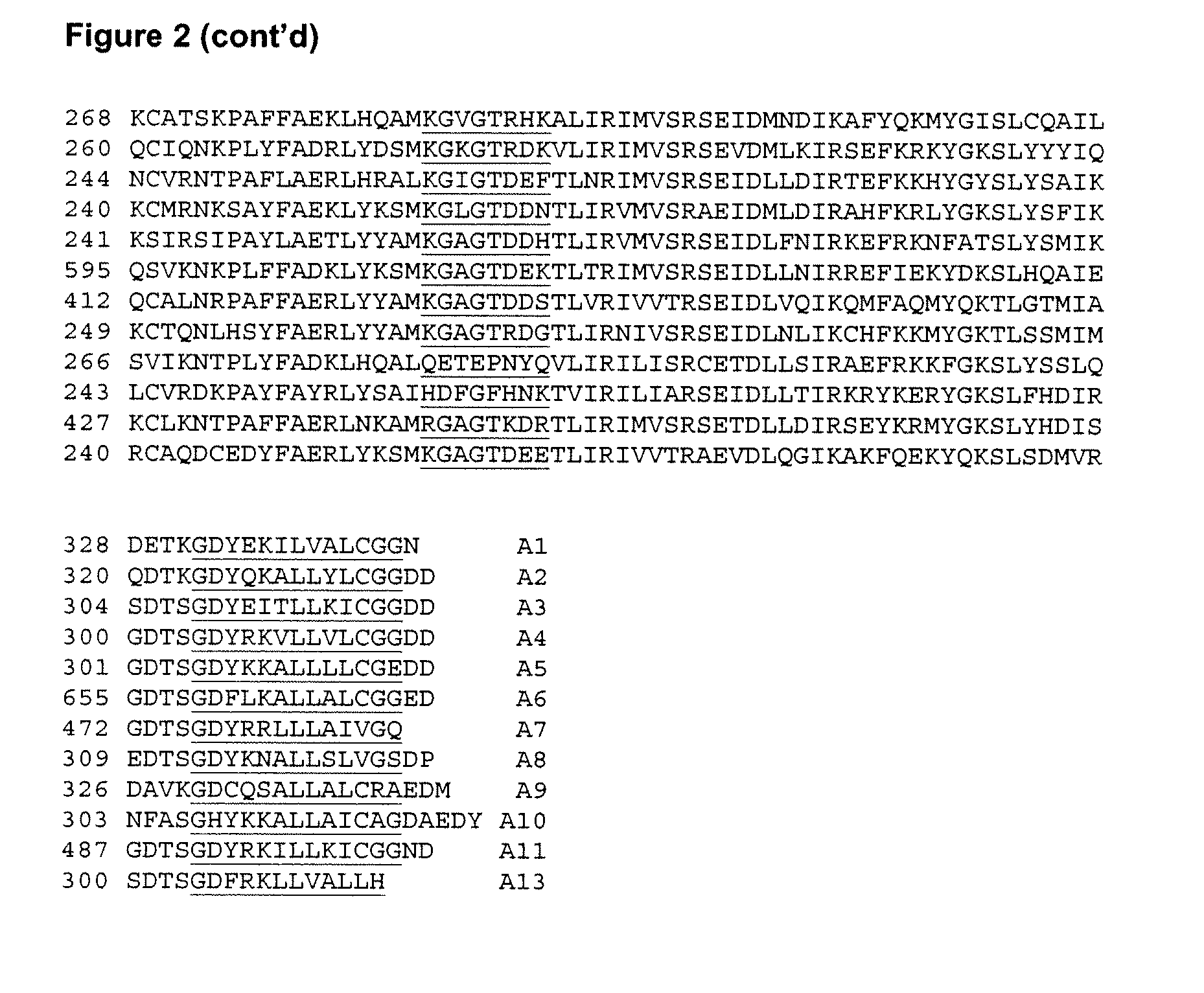Annexin derivatives suitable for pretargeting in therapy and diagnosis
- Summary
- Abstract
- Description
- Claims
- Application Information
AI Technical Summary
Benefits of technology
Problems solved by technology
Method used
Image
Examples
example 1
Production of Annexin A5-2D Variants Having One or More Amino Acids at Positions 62, 69, 100, 137, 138 and 159 Replaced by Alanine and Glycine
[0049]The human annexin A5 cDNA was prepared from a white blood cell cDNA library from a healthy volunteer with standard techniques known in the art. The cDNA sequence encoded the amino acid sequence presented in FIG. 1. Primers were designed to mutate annexin A5 by PCR techniques such that the resulting cDNA encoded the amino acid sequence of FIG. 1 with the exception of the following substitutions, that were performed singularly, but also in combinations thereof in the cDNA: R62A, K69A, K100A, E137A, D138G, and N159A. The annotation employs the single letter code for amino acids and the numerical position in the amino acid sequence where the substitution occurs with left to the number presenting the original amino acid and right to the number presenting the substitute.
[0050]The annexin A5-2D cDNA was cloned into a bacterial expression vector...
example 2
Production of Annexin A5-2D Variants Having One or More Amino Acids at Positions 62, 69, 100, 137, 138 and 159 Replaced by Alanine and Glycine and Having Glutamine at Position 2 Replaced by Cysteine
[0052]The annexin A5-2D cDNA was prepared as described in Example 1 of the present invention. Primers were designed to mutate annexin A5-2D cDNA by PCR techniques such that the resulting cDNA encoded the amino acid sequence of an annexin A5-2D variant with the exception that the amino acid Glutamine at position 2 was replaced by the amino acid Cysteine.
[0053]The purified annexin A5-2D-Cys2 variant appeared as a homogenous band of around 34 kDa on SDS-PAGE and exhibited full calcium-dependent phosphatidylserine binding activity as measured by plasmon surface resonance technique using the BiaCore.
example 3
Production of Annexin A5-2D Variants Having One or More Amino Acids at Positions 62, 69, 100, 137, 138 and 159 Replaced by Alanine and Glycine and Having Glycine at Position 165 Replaced by Cysteine
[0054]The annexin A5-2D cDNA was prepared as described in Example 1 of the present invention. Primers were designed to mutate annexin A5-2D cDNA by PCR techniques such that the resulting cDNA encoded the amino acid sequence of an annexin A5-2D variant with the exception that the amino acid Glycine at position 165 was replaced by the amino acid Cysteine.
[0055]The purified annexin A5-2D-Cys165 variant appeared as a homogenous band of around 34 kDa on SDS-PAGE and exhibited full calcium-dependent phosphatidylserine binding activity as measured by plasmon surface resonance technique using the BiaCore.
PUM
| Property | Measurement | Unit |
|---|---|---|
| dissociation constant | aaaaa | aaaaa |
| pH | aaaaa | aaaaa |
| pH | aaaaa | aaaaa |
Abstract
Description
Claims
Application Information
 Login to View More
Login to View More - R&D
- Intellectual Property
- Life Sciences
- Materials
- Tech Scout
- Unparalleled Data Quality
- Higher Quality Content
- 60% Fewer Hallucinations
Browse by: Latest US Patents, China's latest patents, Technical Efficacy Thesaurus, Application Domain, Technology Topic, Popular Technical Reports.
© 2025 PatSnap. All rights reserved.Legal|Privacy policy|Modern Slavery Act Transparency Statement|Sitemap|About US| Contact US: help@patsnap.com



